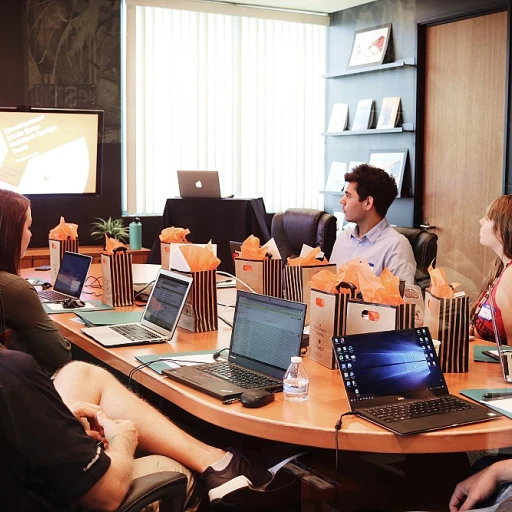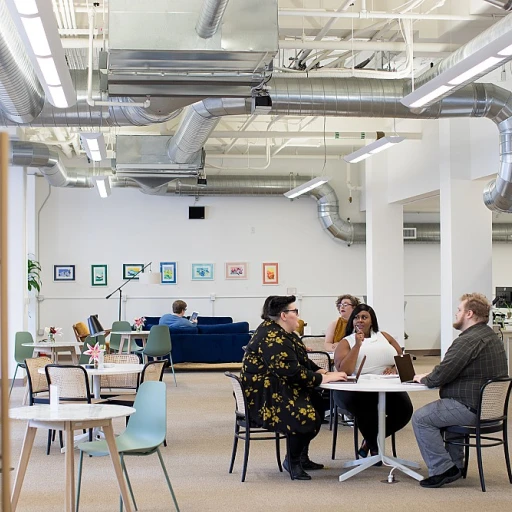
Understanding Continuous Performance Management
A Modern Take on Performance Management
In today's rapidly evolving workplace, the process of performance management has undergone significant changes. Traditional performance reviews, which typically occurred annually, are now being replaced by a more continuous approach that focuses on ongoing feedback and regular check-ins. This shift is designed to align employee goals more closely with organizational objectives and enhance overall employee performance.
Shifting Focus from Annual Reviews to Continuous Conversations
Continuous performance management is not just about swapping the annual performance review for more frequent feedback sessions. It involves a comprehensive management cycle that includes real-time performance check-ins and constructive feedback, allowing managers and employees to maintain an ongoing dialogue about performance and goals. This approach helps create a performance culture where employees feel engaged and supported in their development.
The Importance of Creating a Positive Performance Culture
By fostering a culture that prioritizes continuous improvement, organizations can cultivate an environment where feedback is used as a tool for growth, rather than criticism. This culture encourages open conversations between managers and team members, which in turn can improve overall team performance.
As businesses continue to embrace innovative practices in HR, there's no doubt that the move towards continuous performance management will play a significant role in shaping the future of employee engagement and development.
The Role of Technology in Continuous Feedback
Leveraging Technology for Continuous Performance Conversations
The evolution of performance management towards a continuous performance approach has brought technology to the forefront. In today’s fast-paced work culture, real time feedback is essential to ensure that employees are aligned with company goals and expectations. By utilizing the latest management software, organizations can transform how managers and employees engage in the performance review process.
Technology enables the shift from an annual performance review to continuous check-ins, fostering open conversations about employee performance and growth. This ongoing dialogue helps team members identify obstacles earlier, collaborate more effectively on solutions, and focus on development opportunities. The use of digital platforms facilitates transparency and constructive feedback, which are key to building a high performance culture.
A well-implemented management system can help automate the feedback process, allowing managers to provide performance insights more frequently and with greater accuracy. This technology-driven approach addresses the shortcomings of traditional performance management by creating an adaptable environment for team and manager interaction.
For those looking to enhance employee engagement with innovative tools, exploring our article on enhancing employee engagement through innovative recognition and rewards offers valuable insights into implementing these strategies effectively.
Fostering a Culture of Continuous Improvement
Creating an Adaptive Environment for Continuous Growth
Fostering a culture of continuous improvement is pivotal in optimizing employee performance and overall organizational efficiency. This approach deviates from traditional models by encouraging regular feedback and ongoing conversations between managers and employees. It moves beyond the constraints of annual performance reviews, promoting a more dynamic and interactive performance management process. One effective strategy is to incorporate real-time check-ins, whereby managers and team members can discuss performance, progress, and potential challenges in a timely manner. These interactions help to align employee goals with organizational objectives, ensuring that everyone is on the same path. A continuous performance management system should also prioritize constructive feedback. Providing timely and meaningful insights fosters a growth mindset within the team and reinforces a high performance culture. Managers can facilitate this by encouraging open dialogue and recognizing improvements or achievements as they happen. To successfully establish an adaptive environment, managers need to recognize the benefits of technology in continuous feedback. Innovative management software offers tools that streamline the feedback process, making it more straightforward for organizations to implement real-time performance reviews and track employee engagement. This not only enhances the management cycle but also builds a culture where improvement is both expected and celebrated. For companies looking to embrace this culture, it is essential to understand the potential obstacles and refine best practices. Continuous efforts should be made to support managers and employees, enabling them to fully engage in the process. By cultivating this environment, organizations can transition from traditional performance models to an approach that drives sustained employee development and organizational success. To learn more about the role of technology in performance management, explore why HR needs to embrace online tools here.Benefits for Employees and Organizations
Empowering Individuals and Organizations
Continuous performance management represents a departure from the annual performance review model, where feedback was often infrequent and retrospective. Instead, this ongoing approach ensures employee performance aligns with goals more effectively, creating a thriving work atmosphere. The strategy focuses on real-time feedback and timely conversations between managers and employees. This shifts the management cycle from a bureaucratic process to a dynamic, engaging activity.- For Employees: Continuous feedback fosters a sense of ownership over their roles, allowing team members to become active participants in their performance journey. Employees receive constructive feedback that empowers them to enhance their skills incrementally and adjust their goals as needed.
- For Managers: Regular check-ins transform performance reviews into collaborative dialogues. These real-time exchanges help managers provide relevant insights while furthering employee engagement. Managers find themselves better equipped to support their teams, quickly addressing performance issues and celebrating successes when warranted.
- For the Organization: Embracing a performance culture that revolves around continuous performance can significantly benefit organizations. They can track improvement through performance management software, creating a more agile framework for talent development. Companies thus become more adaptive, making them better prepared to meet future challenges.
Challenges and Solutions in Implementation
Managing the Transition to Continuous Feedback
Transitioning from a traditional performance review approach to a continuous performance management system can present challenges but with strategic planning, organizations can overcome them. One of the major challenges is realigning the management process and culture to support ongoing feedback and employee engagement. Traditionally, performance reviews have been annual check-ins. However, this outdated method often fails to help managers address issues in real-time or set timely goals for employee performance. Organizations looking to implement this new approach need to focus on the following strategies:- Training and Support: Equip managers with skills to provide constructive feedback and hold meaningful conversations with team members. A well-trained manager can foster a performance-oriented culture with high-engagement.
- Adopting Technology: Management software can streamline the management cycle, allowing managers and employees to set goals, track progress, and provide feedback continuously, effectively embedding the continuous performance model.
- Reevaluating Performance Goals: Establish clear, measurable, and realistic employee goals that align with the organization's overall objectives. This can improve employee performance by offering a clear roadmap for success.
- Encouraging Culture Change: Transitioning requires shifting the organization’s culture to prioritize ongoing feedback over traditional performance reviews. This change should emphasize the value of regular feedback and the role of team managers in facilitating the process.












